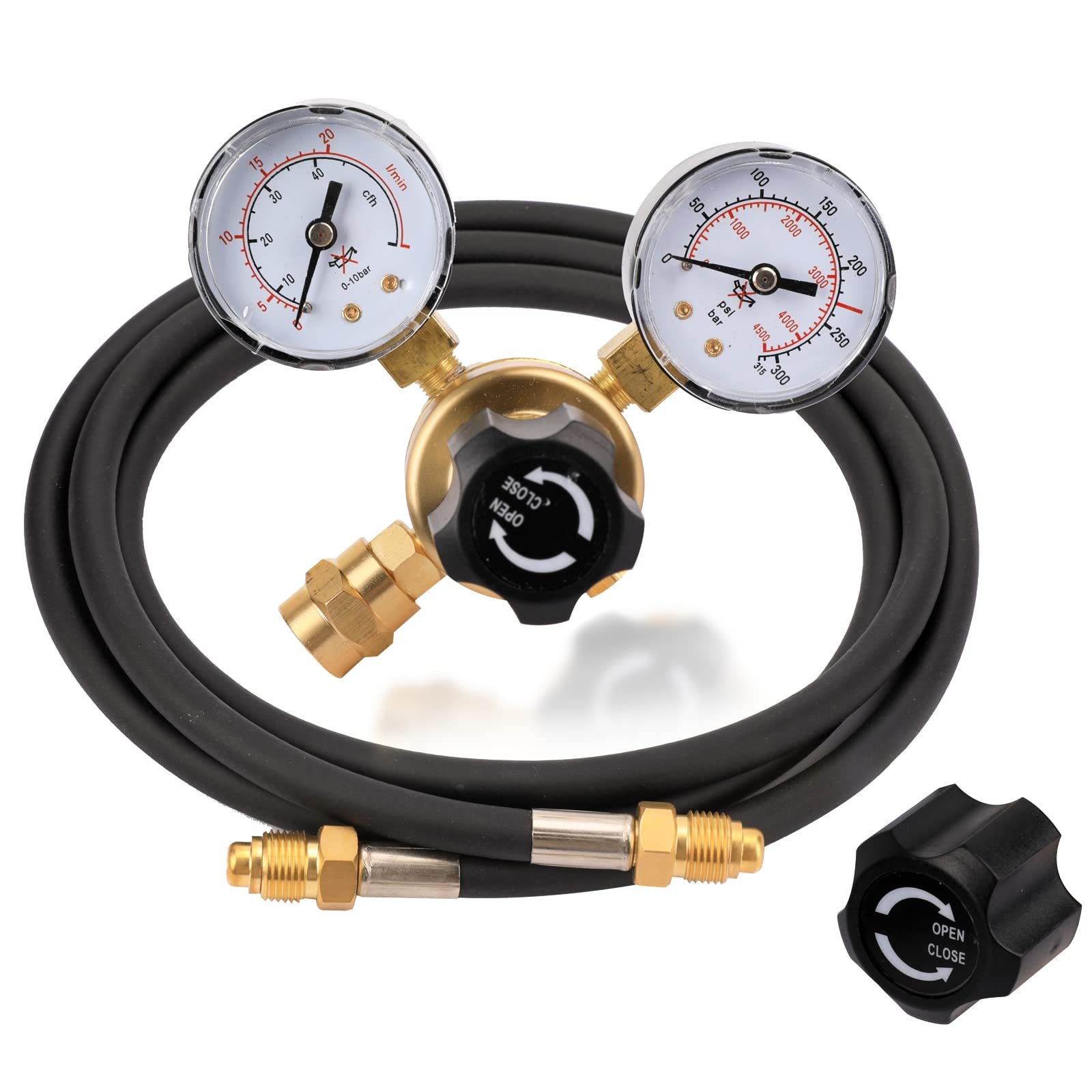Yes, you can MIG weld with 100% argon, but it is not ideal. This gas is typically reserved for TIG welding or for MIG welding non-ferrous metals.
MIG welding, or Metal Inert Gas welding, usually requires a different gas mixture to facilitate the proper arc and ensure a strong weld. Argon is a noble gas that maintains a stable arc and is less reactive with welding materials, which can be beneficial.
However, using 100% argon for MIG welding, especially with steel, can lead to an erratic arc and cause problems with weld penetration and overall weld quality. For most MIG welding applications, a mix of argon and carbon dioxide is preferred, as this combination provides a good balance of arc stability and weld penetration. When considering the right gas for MIG welding, it’s crucial to match the gas to the project requirements to achieve the best results.

Credit: www.scribd.com
Benefits Of Mig Welding With 100% Argon
When you think about MIG welding, mixed gases or CO2 often come to mind. Yet, 100% Argon gas provides certain advantages. Craftsmen seeking precision and cleanliness in their metal work will appreciate these benefits. Argon, a noble gas, brings with it properties that influence weld quality and spatter levels positively. Such attributes make it an intriguing choice for specific welding applications.
Improved Weld Quality
Using 100% Argon in MIG welding can significantly enhance the weld quality. This is due to Argon’s ability to create a more stable arc. A stable arc translates into a cleaner weld bead with fewer defects. Argon’s inert nature also means that it won’t react with the metal being welded. This reaction avoidance results in a purer, stronger weld. Metals that benefit greatly from Argon include aluminum and other non-ferrous metals.
Reduced Spatter
Welders value a clean working environment. It leads to less post-weld cleanup. Spatter occurs when droplets of molten metal are thrown from the weld pool. It can be both a safety hazard and a nuisance. Using 100% Argon minimizes spatter due to its smoother arc characteristics. The smooth arc not only keeps the work area cleaner but also ensures that more metal goes into the joint. This boosts efficiency and saves time on grinding and touch-up work.

Credit: www.amazon.com
Considerations For Mig Welding With 100% Argon
When venturing into the world of MIG welding, the choice of shielding gas plays a pivotal role in the quality of your welds. Using 100% Argon in MIG welding is unconventional, but it can be done with careful consideration. The effects of this choice on penetration levels and overall costs are significant factors every welder should weigh.
Limited Penetration
Using pure Argon in MIG welding can lead to shallow penetration. This makes the weld less effective, especially on thicker materials. The arc with Argon is more stable but doesn’t dig as deep into the base metal. Welders often notice a more rounded bead profile, which may not be desirable for certain applications. Understanding this limitation is crucial for achieving the desired results.
Higher Cost
Cost is another vital factor when considering 100% Argon for MIG welding. Argon is typically more expensive than the commonly used CO2 or Argon-CO2 mixtures. This can significantly increase the overall welding expenses. Budget constraints must be balanced with the specific requirements of the welding task before deciding on this gas precisely.
Alternatives To Mig Welding With 100% Argon
Exploring MIG Welding with 100% Argon can raise quite a few eyebrows among seasoned welders. The curiosity stems from Argon’s non-reactive nature, making it less ideal for traditional MIG welding. It doesn’t offer the necessary arc stability on ferrous materials. Fret not, though; there are viable alternatives to still achieve that solid, clean join.
Mig Welding With A Mixed Gas
When pure Argon won’t do for MIG, a mixed gas solution steps in. This blend usually combines Argon with Carbon Dioxide (CO2) and sometimes, a dash of Oxygen. It’s tailored for steel welding. The CO2 adds the much-needed heat. It ensures deep weld penetration. A common Argon and CO2 mix would be 75/25.
Advantages of Mixed Gas:
- Better arc stability than 100% Argon.
- Good weld penetration, essential for thicker materials.
- Reduced spatter, for a cleaner welding area.
Typical Mixed Gas Ratios:
| Argon | CO2 | Usage |
|---|---|---|
| 75% | 25% | Mild Steel |
| 90% | 10% | Stainless Steel |
Tig Welding
TIG Welding is another path and actually thrives with 100% Argon. It’s perfect for jobs requiring precision. TIG uses a tungsten electrode. This electrode doesn’t melt. That means cleaner welds and less waste. Aluminum and stainless steel love TIG welding. For beginners, TIG can be a challenge. Practice makes perfect!
Why Choose TIG?
- Crisp, high-quality welds.
- No spatter, minimizing cleanup.
- Great for thin materials.

Credit: www.youtube.com
Proper Technique For Mig Welding With 100% Argon
Mastering the art of MIG welding with 100% Argon takes skill and understanding of the process. Unlike mixed gases, Argon requires precise handling to yield the best welds. Let’s dive into the proper technique for optimal results with pure Argon.
Adjusting Wire Speed And Voltage
Getting the settings right on your MIG welder sets the stage for a strong weld. Wire speed affects the arc’s stability; too fast, and you might create spatter. Too slow, and the wire could burn back to the contact tip.
- Test on scrap metal: Start with a few trials on expendable material. Adjust until the weld bead looks uniform.
- Keep an eye on voltage: Voltage controls the weld’s penetration. Match the voltage to the wire speed for a smooth, steady arc.
| Material Thickness | Recommended Wire Speed (Inches per minute) | Recommended Voltage (V) |
|---|---|---|
| 1/16″ | 250-300 | 15-16 |
| 1/8″ | 300-350 | 17-18 |
| 1/4″ | 350-400 | 20-22 |
Maintaining A Steady Arc
Steadiness is key when welding with 100% Argon. The arc should not flicker or wander across the workpiece.
- Choose the right contact tip: It must match the wire diameter.
- Use a consistent travel speed: Move at a pace that allows the metal to merge without holes.
- Practice the right angle: Hold the torch at a 10-15 degree angle in the direction of travel.
Remember, patience pays. With 100% Argon, your welding technique must be deliberate and controlled for solid, clean connections.
Frequently Asked Questions On Can You Mig Weld With 100 Argon
Can I Use 100% Argon For Mig Welding Steel?
Yes, you can use 100% argon for MIG welding steel, but it’s typically better suited for non-ferrous metals like aluminum. For optimal results on steel, a mix of argon and CO2 is often recommended.
What Is The Best Gas For Mig Welding Mild Steel?
The best gas for MIG welding mild steel is a mix of 75% argon and 25% carbon dioxide, known as C25. This blend provides a good balance of weld quality and cost-efficiency.
What Level Of Argon For Mig Welding?
For MIG welding, a typical argon gas level is between 75% to 100%. This range offers a stable arc and reduced spatter for most materials.
Can You Use Argon Gas On A Mig Welder?
Yes, you can use argon gas on a MIG welder, specifically for welding non-ferrous materials like aluminum.
Conclusion
Wrapping up, it’s clear that using 100% argon for MIG welding can work, but it’s not optimal for steel. For materials like aluminum, pure argon is the right choice, offering cleaner, spatter-free welds. Remember to match your gas to the project for the best results.
Happy welding!
